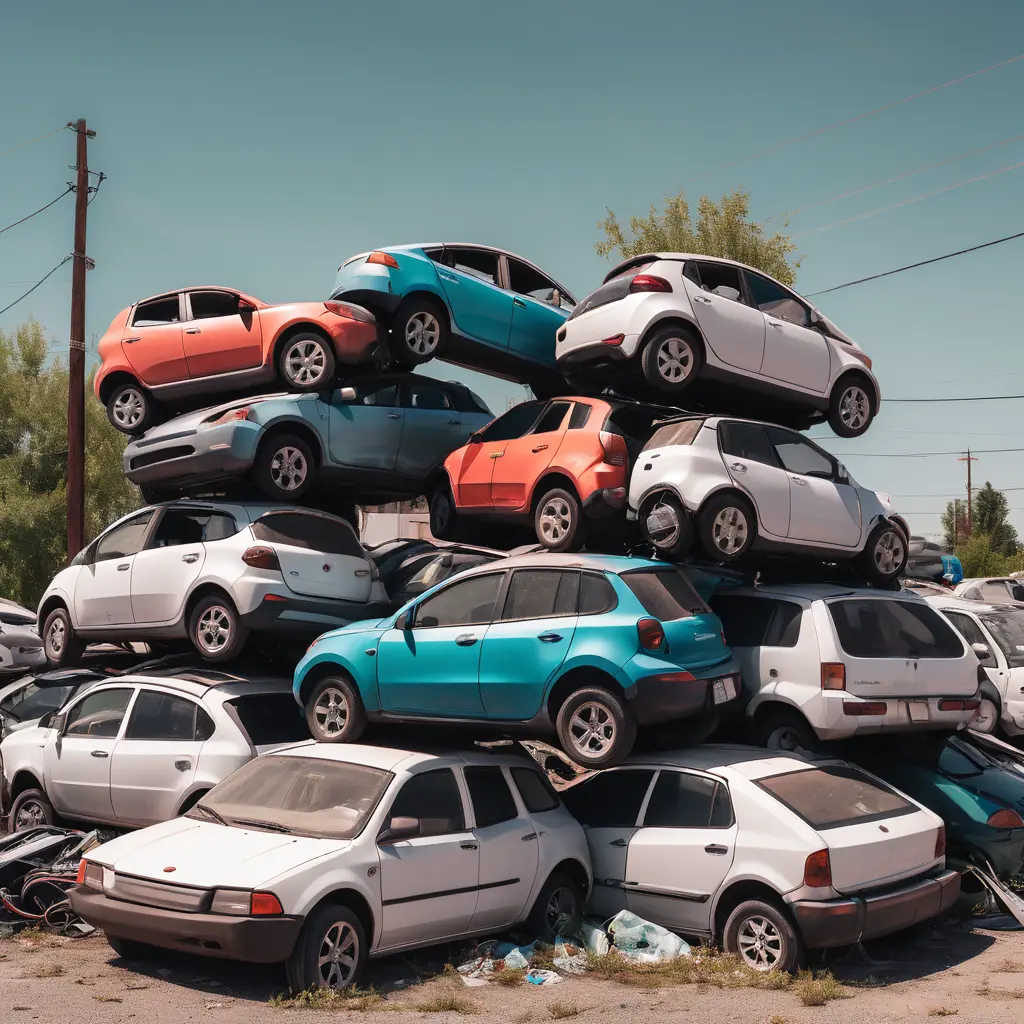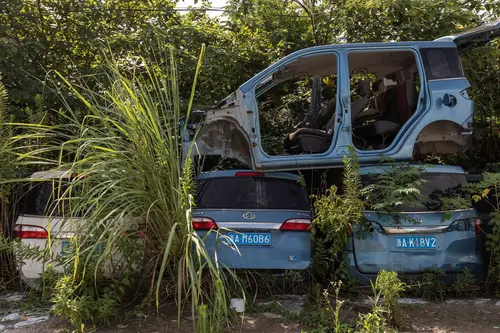Abandoned, Obsolete EVs are Piling Up in China
Published by Campbell M Gold in Misc · Monday 05 Aug 2024 · 5:45
Tags: EVs, Abandoned, Obsolete, China, Electric, Vehicles, Battery, powered, Subsidies, Manufacturer, Piling, Up
Tags: EVs, Abandoned, Obsolete, China, Electric, Vehicles, Battery, powered, Subsidies, Manufacturer, Piling, Up

Abandoned, Obsolete EVs Are Piling Up in China
A subsidy-driven boom helped develop China into a major electric car manufacturer, leaving abandoned lots nationwide filled with unwanted battery-powered vehicles...
On the outskirts of Hangzhou, an old temple overlooks a graveyard of electric cars. Similar scenes can be found in at least six Chinese cities, where numerous abandoned battery-powered vehicles lie among weeds and garbage. Some cars in Hangzhou have remained for so long that plants are growing from their boots, while others were left in such a hurry that fluffy toys are still on their dashboards.
This situation resembles the aftermath of the 2018 bike-sharing industry crash when millions of bicycles were abandoned after the rise and fall of startups like Ofo and Mobike.
The abandoned cars likely belonged to failing ride-hailing companies or were dumped as newer electric vehicles with improved features and longer driving ranges emerged. The abandoned vehicles represent the excess and waste that can occur when large amounts of capital enter a growing industry while also serving as a reminder of the significant progress in EVs over the past few years.

About a decade ago, encouraged by government subsidies, hundreds of car makers across China, established and startups, ventured into EV manufacturing. They produced early-stage EVs—relatively basic cars with batteries that could only run, in some models, for around 100 kilometres (62 miles) on a single charge.
These vehicles were primarily purchased by "ride-hailing" companies that leased them to drivers. "At the beginning of China’s EV market, delivery numbers were driven by car-sharing fleets," said Young Huang, a senior analyst with JSC Automotive, a consultancy with offices in Shanghai and Stuttgart. "Only a few private customers chose to buy them."

The demand has driven tremendous growth in the clean car industry. China has become the global leader in producing clean cars, building approximately 6 million EVs and plug-in-hybrids in 2022, accounting for almost one in three new vehicles sold domestically. China now holds 60% of the world's current electric fleet and boasts the most extensive EV charging infrastructure globally, which was established with government support.
Despite the rapid development, many ride-hailing companies that embraced EVs have gone out of business. The number of Chinese electric car manufacturers has dropped to around 100, down from approximately 500 in 2019.

The increasing number of abandoned EVs in Hangzhou is a concerning issue. Removing EVs so quickly affects their climate benefits due to the high emissions during their production. Additionally, the batteries used in EVs contain valuable materials like lithium, nickel, and cobalt, which could be recycled (currently, very difficult and uneconomical) to make China's EV industry more environmentally friendly.
Despite the government's promise to dispose of the accumulated cars, the city still has several sites filled with abandoned EVs in the Yuhang and West Lake districts.
Before Tesla established its factory in Shanghai in early 2020, most EVs produced in China were of low quality and unappealing to consumers, who had a better selection of attractive combustion engine vehicles.
In late 2000, the government made efforts to boost the adoption of EVs by providing rebates of up to 60,000 yuan ($8,400) per vehicle and implementing restrictions on the ownership of petrol cars in several major cities. As part of this initiative, carmakers supported or established ride-hailing startups incorporating EVs into their fleets.
For instance, Geely supported Caocao Chuxing, a ride-hailing service still in operation. However, another car-sharing service called Panda, backed by Chongqing Lifan Auto Co., ceased its operations, and Lifan Auto filed for bankruptcy in 2020. Geely later acquired Lifan Auto after its bankruptcy. A brand of EV known as Maple, produced as part of a joint venture between Geely and Lifan, was found at one of the sites.

In the mid-2010s, China increased its efforts to promote the adoption of EVs by implementing a credit system that rewarded carmakers for producing EVs and penalised the manufacturing of high-fuel-consumption cars. In 2021, a report by Fitch Ratings Inc. suggested that some companies had started ride-hailing services to absorb their increasing stocks of unsold EVs.
Additionally, some companies were found to be cheating the subsidy program by submitting false records for non-existent EVs, such as producing vehicles with empty chassis or using batteries that did not meet the correct specifications. It was reported in 2016 by the official People’s Daily that numerous companies had fraudulently claimed over 9.3 billion yuan ($1.3 billion) in subsidies.
In response to these issues, Beijing began cutting national subsidies for all-electric car purchases in 2019, catching many ride-hailing companies off guard and severely affecting their cash flow. This led to many bankruptcies in the industry.
The emergence of EV graveyards became a topic of public attention in 2019 after reports appeared on the internet and local media.

Fitch Ratings' director of China corporate research, Jing Yang, one of the authors of the agency’s 2021 report, mentioned that she is not surprised to hear about the existence of EV graveyards. She noted that taxi companies and fleet operators' adoption of EVs was crucial in educating consumers about their safety and reliability. This, in turn, encouraged manufacturers to invest in EV-related technologies, even when there wasn't a significant consumer market for them, thus laying the foundation for broader future demand.
Yang stated, "This phenomenon concludes the past of China’s new-energy vehicle market but speaks little for its future."

Photographer Wu Guoyong, based in Shenzhen, was among the first in China to capture the growing EV junk piles. In 2018, he captured drone images of abandoned bicycle piles, and in 2019, he filmed thousands of electric cars in vacant lots in Hangzhou and Nanjing, the capital of China’s eastern Jiangsu province.
Wu mentioned that China’s capital market was initially small when the nation started expanding. However, he noted that unregulated financing has become like a "tsunami."
Wu also stated that the abundance of shared bikes and electric vehicle graveyards is a consequence of uncontrolled capitalism. He believes that the wastage of resources, environmental damage, and wealth depletion are natural outcomes of "this situation."
Similar EV graveyards can be found in Europe and the US.
17 Aug 2023
Source:
Various News Feeds, Bloomberg, and AI
There are no reviews yet.


